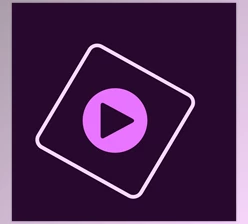
What is the Adobe Media Encoder?
Adobe Media Encoder is utilized to compress the audio and video file. When the file is rendered, it's enormous. To play with it smoothly without issues on the device, without the availability of a powerful processor, the memory of millions and the ability to play across mobile networks should be compressed as well. The compressions include a variety of types of algorithms based on the information that is included in this. It will be distributed afterward in whatever degree of compression is deemed acceptable by the user or creator. It is an Adobe Media Encoder. Adobe Media Encoder acts just as an encoding engine that works with The Adobe Premiere Pro version and the Adobe After Effect, along with Adobe Prelude and the Adobe Character Animator. As a standalone encoder, users can utilize Adobe Encoder. Adobe Encoder. The most frequently asked question that is asked is why we should utilize this Adobe Media Encoder, and here is the answer to these questions:
It allows you to export videos using the latest presets, such as YouTube, etc., directly from Premiere or AE without stopping editing. On this server, users can upload the file to the media encoder queue and then return and begin editing in the same way. It is an excellent tool for editing audio files, and it is useful for Podcast Audio or the 16LUFS, which is stereo.
Workspace of the Adobe Media EncoderFive panels is included within the Adobe Media Encoding. At the same time, the document that the user would like to use will be encoded to use. The user can float them or set multiple groups to tabs within one framework.
The Encoding Panel: On the status of every single product, the Encoding panel can be there to offer guidance. The Encoding panel shows the time to finish predicted for each output and preview and the progress bar as users encode multiple outputs in one time.
Queue panel users will be able to add documents that they must encode within this queue panel. It is possible to insert videos or audio files and Adobe Premiere Pro's sequence and the Adobe to encode. The user can select the files he wants to encode and drag the file to the source or the queue. Specific Adobe programs allow export to AME like After Effects, the Prelude, Audition, and Character Animation.
The preset browser purpose of this browser is to provide the option for users to improve the workflow, and it also assists in this way.
Working using the Press Browser: Until or unless the user adds them to 15 the media browser, it allows users to view media files. The media files can be added by dragging them into the Queue Panel, or the user may double-click them in the Media Browser. If the user wants to view the Thumbnails, they should click the Icon View button and if you want to view the content for listing, select the List View icon. If the user wishes to view the content quickly, drag the cursor across the thumbnail, use the playback feature, and hit the thumbnail. The size of the thumbnail for the document can be altered through the Zoom slide menu. In the future, if the user needs to view any file, they could select it from the Files of Type menu and follow the procedure if required to support these kinds of files.
Add, delete, and rearrange sources in the stitched clip: The user may opt to conceal or display the clip stitched by pressing the hot-text toggle easily accessible by clicking on the title. If the user wants to add more resources to the clip stitched, it's possible to pull the resources out of the media browser or from the background and drop them into the resource list. The natural resources have a frame size, and then it is proportional to the size of the video. The aspect ratio is well preserved.
Click on the below link to download the Adobe Media Encoder CC Pre-Activated Version NOW!
کاربر گرامی، برای ثبت نظر خود، ابتدا باید وارد حساب کاربری خود شوید.
ورود به حساب کاربری
 Adobe Media Encoder 2023 v23.6.0.62 (x64) Multilingual.rar (سایز: 845.9 MB - تاریخ: 05/07/1402 04:57:59 ب.ظ)
Adobe Media Encoder 2023 v23.6.0.62 (x64) Multilingual.rar (سایز: 845.9 MB - تاریخ: 05/07/1402 04:57:59 ب.ظ) Adobe Media Encoder 2023 v23.0.0.57 for Win x64 Multilingual Portable Edition.rar (سایز: 922.3 MB - تاریخ: 26/07/1401 12:46:43 ب.ظ)
Adobe Media Encoder 2023 v23.0.0.57 for Win x64 Multilingual Portable Edition.rar (سایز: 922.3 MB - تاریخ: 26/07/1401 12:46:43 ب.ظ) Adobe Media Encoder 2021 v15.4.1 for macOS + CRACK.rar (سایز: 3.0 GB - تاریخ: 04/12/1400 04:02:28 ب.ظ)
Adobe Media Encoder 2021 v15.4.1 for macOS + CRACK.rar (سایز: 3.0 GB - تاریخ: 04/12/1400 04:02:28 ب.ظ) Adobe Zii 2021 6.1.5 universal Patcher macOS.rar (سایز: 5.8 MB - تاریخ: 04/12/1400 02:52:34 ب.ظ)
Adobe Zii 2021 6.1.5 universal Patcher macOS.rar (سایز: 5.8 MB - تاریخ: 04/12/1400 02:52:34 ب.ظ) Adobe Activators & Tools.txt (سایز: 164.0 bytes - تاریخ: 10/05/1399 07:40:57 ب.ظ)
Adobe Activators & Tools.txt (سایز: 164.0 bytes - تاریخ: 10/05/1399 07:40:57 ب.ظ)
رمز فایل ها : webdevdl.ir
Note
Download speed is limited, for download with higher speed (2X) please register on the site and for download with MAXIMUM speed please join to our VIP plans.



